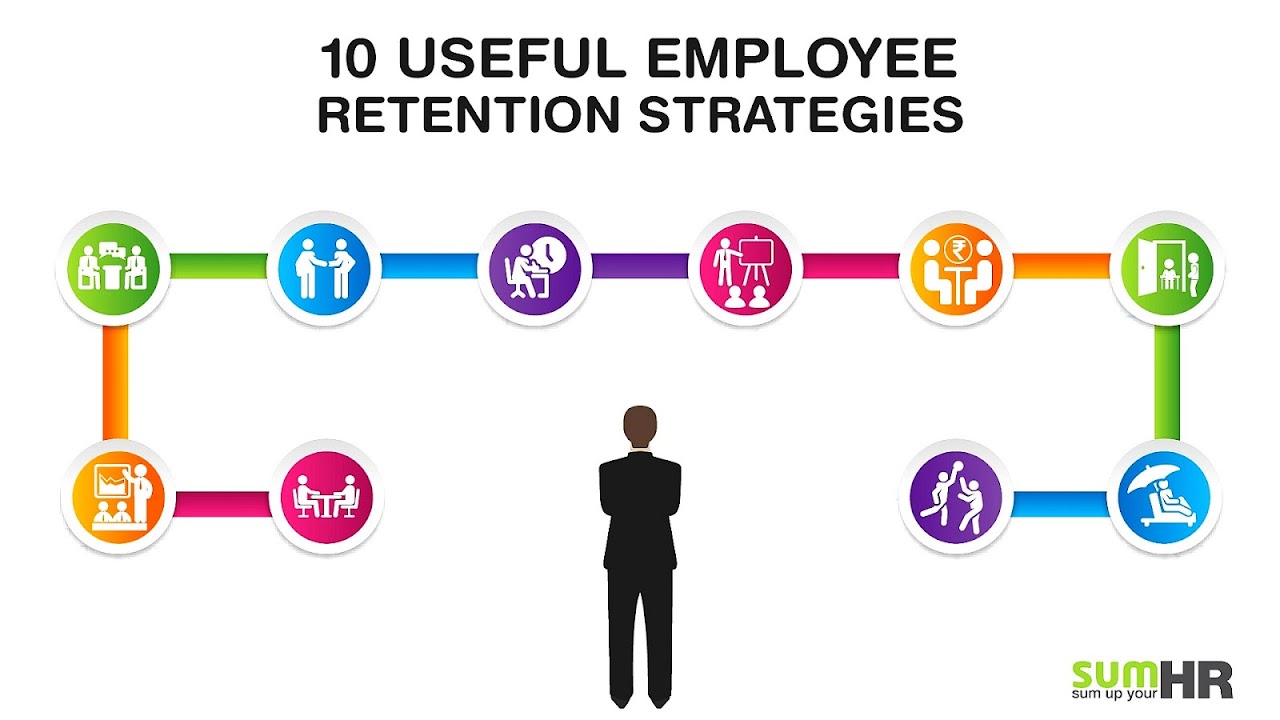
Employee retention refers to the ability of an organization to retain its employees. Employee retention can be represented by a simple statistic (for example, a retention rate of 80% usually indicates that an organization kept 80% of its employees in a given period). However, many consider employee retention as relating to the efforts by which employers attempt to retain employees in their workforce. In this sense, retention becomes the strategies rather than the outcome.
A distinction should be drawn between low-performing employees and top performers, and efforts to retain employees should be targeted at valuable, contributing employees. Employee turnover is a symptom of deeper issues that have not been resolved, which may include low employee morale, absence of a clear career path, lack of recognition, poor employee-manager relationships or many other issues. A lack of satisfaction and commitment to the organization can also cause an employee to withdraw and begin looking for other opportunities. Pay does not always play as large a role in inducing turnover as is typically believed.
In a business setting, the goal of employers is usually to decrease employee turnover, thereby decreasing training costs, recruitment costs and loss of talent and organisational knowledge. By implementing lessons learned from key organizational behavior concepts, employers can improve retention rates and decrease the associated costs of high turnover. However, this isn't always the case. Employers can seek "positive turnover" whereby they aim to maintain only those employees whom they consider to be high performers.

Maps, Directions, and Place Reviews
Cost of turnover
Studies have shown that cost related to directly replacing an employee can be as high as 50-60% of the employee's annual salary, but the total cost of turnover can reach as high as 90-200% of the employee's annual salary. These costs include candidate views, new hire training, the recruiter's salary, separation processing, job errors, lost sales, reduced morale and a number of other costs to the organization. Turnover also affects organizational performance. High-turnover industries such as retailing, food services, call centres, elder-care nurses, and salespeople make up almost a quarter of the United States population. Replacing workers in these industries is less expensive than in other, more stable, employment fields but costs can still reach over $500 per employee.
Effective Employee Retention Strategies Video
Herzberg's theory
An alternative motivation theory to Maslow's Hierarchy of Needs is the Motivator-Hygiene (Herzberg's) theory. The theories have overlap, but the fundamental nature of each model differs. While Maslow's Hierarchy implies the addition or removal of the same need stimuli will enhance or detract from the employee's satisfaction, Herzberg's findings indicate that factors garnering job satisfaction are separate from factors leading to poor job satisfaction and employee turnover. Herzberg's system of needs is segmented into motivators and hygiene factors. Like Maslow's Hierarchy, motivators are often unexpected bonuses that foster the desire to excel. Hygiene factors include expected conditions that if missing will create dissatisfaction. Examples of hygiene factors include bathrooms, lighting, and the appropriate tools for a given job. Employers must utilize positive reinforcement methods while maintaining expected hygiene factors to maximize employee satisfaction and retention.
Source of the article : Wikipedia


EmoticonEmoticon